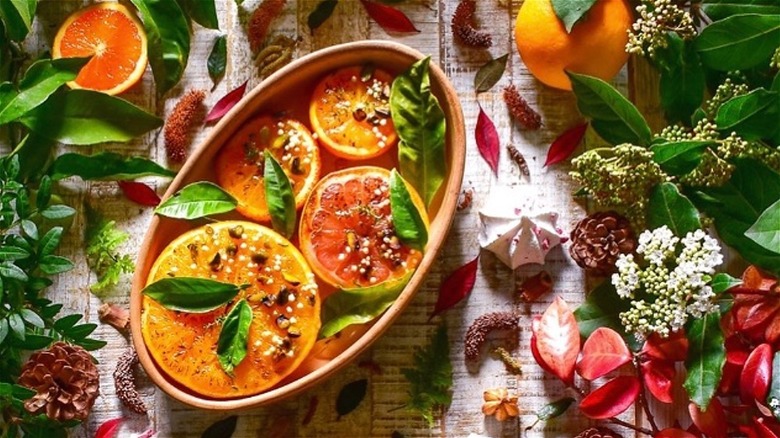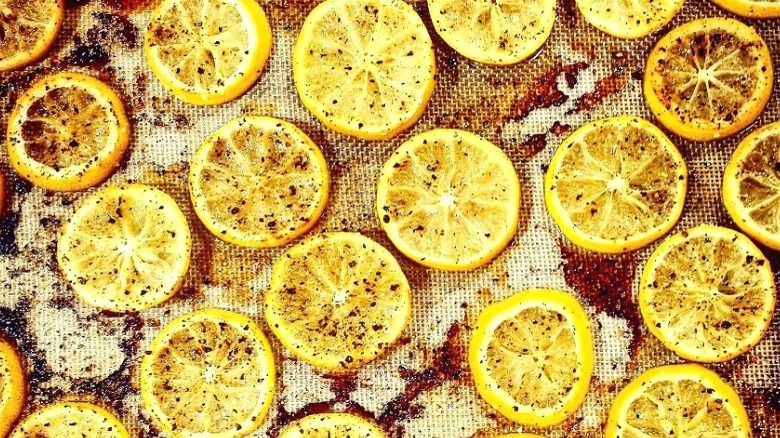Roasting Citrus Is A Simple Process With Major Benefits
Whether baked, poached, or pan-sauteed and reduced to a sweet-syrupy drizzle, fruit under fire leaves a certain unctuous film on the tongue (once cooled to safety). It's a staple in pies, crumbles, tarts, and sauces. Cooking breaks down unwanted stringiness, concentrates the sugars, and magnifies a fruit's essence according to Food and Nutrition. Sometimes, all shape is relinquished in trade for flavor. And occasionally, alchemy is served from underripe, bland, or watery fruits. Per the outlet, most types can benefit from cooking, including apples, pears, pineapples, stone fruits, figs, and berries. Further, it's a great solution for making out-of-season or frozen options palatable during winter.
On that note, there is an abundance of citrus fruit available in what can otherwise feel like a meager period. But for the majority of us, a cold or room-temperature orange or grapefruit doesn't have the same cozy appeal as a bubbling apple cobbler. Additionally, we wouldn't think of snacking on a whole lime or lemon the way we would a plum or peach; even when not in season, the latter are scads less tart. However, citrus can be an amazing pick-me-up for dishes during winter. For example, it's wonderful with seafood and poultry, and the vibrant juices are a natural with salads, where they act as the acid component of a dressing per Food & Wine. Of course, desserts featuring citrus shine.
Yet every so often, even citrus fruits are dull or dry; and according to Lifehacker, they too should take some heat for it.
Quick or slow, heat concentrates flavor
Per Lifehacker, roasting citrus fruits, as well as other fruits and vegetables, amps up their flavor. It rids them of excess water that can dilute sugars and taste-making compounds. In the meantime, they caramelize and brown, which contributes additional nuance. Author and longtime Editor in Chief of Gourmet Magazine, Ruth Reichl, staunchly agrees, saying, "All fruits and vegetables get better when they're blasted with heat." She pan-roasts clementines with olive oil and rosemary until some of the segments are lightly scorched. After marinating with cider syrup and vinegar, they're a sweet and tangy compote for ricotta and crackers or shaved prosciutto.
Roasted citrus can also be served with grains and meats, and as a topping for yogurt or cake. According to Lifehacker, no recipe is needed. Simply pull apart the sections, remove as much pith as reasonably possible, and toss them in olive oil. Add sweetener, chili flakes, fresh herbs, and salt and pepper if you wish. While Reichl uses a cast-iron pan on the stovetop, the outlet prefers to scatter their citrus in an oven-safe dish and roast it at 400 degrees Fahrenheit for approximately 40 minutes — it should just be starting to char in some areas. Food52 contends the peel can be left on. They like to cut the fruit into wedges or half-moons, placing them on a parchment-lined baking sheet to roast for half an hour. If you're squeezed for time or want a spur-of-the-moment reward, quickly broil them instead for a boost of flavor.

